Let us pay attention to those assets that may go under the hammer in the process of declaring economic insolvency. Let's consider what a bankruptcy estate is in the bankruptcy of an individual or legal entity, what is permissible to include in it and what is not, how to compile it, in what order to distribute the proceeds from its sale to creditors, as well as other related issues. Maximum details so that you understand all its relevance, as well as the importance of the role of the financial manager who works directly with it. By the way, depending on the skill, professionalism, experience and even honesty of a given expert, it can cover the obligations either completely or only partially.
Let us immediately clarify that there are several definitions of it, but they all follow from Article 131 of Federal Law No. 127, and therefore overlap in meaning, but still deserve attention separately.
- The bankruptcy estate in bankruptcy is
- What is included in the bankruptcy estate?
- What is the procedure for forming a CM
- What is allowed to be included in the CM
- How is the CM assembled?
- Formation of bankruptcy estate in case of bankruptcy of an individual
- Formation of KM company
- The bankruptcy estate of the individual entrepreneur
- Distribution of bankruptcy estate in bankruptcy of individuals
- Withdrawal of property from KM
- Inclusion of property in KM
- Lease right in the bankruptcy estate
- Stages of bankruptcy
- Restructuring
- Settlement agreement
- What property is not included (is not included) in the bankruptcy estate?
- Withdrawal of funds from CM
- Drawing up an application (petition) to exclude the debtor’s property from the bankruptcy estate
The bankruptcy estate in bankruptcy is
Traditionally, this term (abbreviated as CM) refers to the property of the debtor that is in his ownership at the time of the start of bankruptcy proceedings (as well as acquired at the stage of supervision, restructuring, financial management, or deliberately hidden, but found) and subject to collection.
The manager must collect all these assets (accumulate them), carefully inventory them, adequately and accurately evaluate them, and then ensure their safety until sale.
There are also alternative definitions that fully comply with the law and reflect other important aspects of the issue. They also cannot be ignored - according to them:
Bankruptcy of individuals
from 5000 rub/month
Read more
Services of a credit lawyer
from 3000 rubles
Read more
Legal assistance to debtors
from 3000 rubles
more
Write-off of loan debts
from 5000 rub/month
More details
- The bankruptcy estate of a debtor citizen consists of all his property and material rights and, attention, obligations in the aggregate. For comparison, the same enterprise is often rational and generally realistic to sell only as an integral complex, while the assets of an ordinary Russian can be successfully offered separately.
- This is also a prerequisite for the introduction of a special operating regime for the company, which begins when the financial agreement is drawn up and lasts until the proceeds are transferred to creditors. During this period, a significant part of the organization’s forces is thrown into the auction, making a profit from the liquidation process, and exclusion from the list of subjects of economic activity.
- And, finally, these are all values, real and not, that are successfully converted into money, including account balances, debts of counterparties, partners, and other people.
The process of forming the bankruptcy estate of the debtor
Also, foreclosure cannot apply to property that the debtor uses on a leasehold basis. After all, the company is not its actual owner. The objects to be excluded include housing stock and communal infrastructure used by ordinary citizens.
Also, the property and personal rights of the debtor’s employees do not fall into this category. In fact, they cannot be sold, since they are registered to a specific person. For example, a company was engaged in work at height and permits for its employees to work at height cannot be included in the bankruptcy estate.
Bankruptcy estate of an individual The bankruptcy estate of an individual is formed at the stage of sale of property, when the installment plan for his debt obligations cannot be approved due to insufficient income or the individual has not fulfilled the terms of the restructuring schedule.
What is included in the bankruptcy estate?
In general (regardless of the subject’s status) this is:
- assets, both fixed and working capital;
- assets, both tangible and not;
- receivables;
- other sources of finance.
A separate article covers creative, inheritance and similar rights.

A third alternative definition fits perfectly here: it is anything that can be sold, at auction or otherwise. Today, electronic auctions are most often held, as they are as convenient as possible for buyers and save all participants in the transaction from additional expenses (for renting premises, logistics, personal presence).
What funds can be additionally excluded through the court?
Depending on the circumstances that require financial support, additional exclusion from the bankruptcy estate is possible. For example, if the debtor lives in a rented apartment, he needs funds to pay rent. In addition, the question of covering the cost of utility bills is raised.
The costs of medical care and the purchase of medications are recorded separately. All specified expenses must be supported by documents. These include:
- Residential lease agreement.
- Invoices for payment of utility services received.
- Medical certificates confirming that the debtor has certain pathological conditions requiring the use of expensive medications.
- Documents confirming the need to perform expensive medical procedures.
If the financial manager refuses to exclude funds from the bankruptcy estate, you will have to write a statement challenging the action to the Arbitration Court, which is considering the bankruptcy case.

What is the procedure for forming a CM
It is carried out by the arbitration manager in several stages:
Inventory (inventory) of assets - on the basis of accounting and other accountable documentation, which the debtor is obliged to provide - within 3 days from the date of submission of the corresponding request from the financial expert.
- An attempt to search for and return property illegally appropriated by third parties; As a rule, it is relevant in cases of concealing values and deliberately transferring them to other people.
- Allocation of collateral - they must be considered and carried out separately, since they will be used to satisfy the claims of those creditors to whom they are intended.
- Adjustment of CM - is carried out after exclusion from the bankruptcy estate of the subsistence minimum, the only housing (apartment, house), a car - if it is a means of transportation for a disabled person - and other assets that are not subject to recovery.
- Analysis of transactions carried out by a potential bankrupt some time before the appearance of financial problems. If the nature of these transactions is considered questionable, they may be challenged in court, resulting in the return of the money or other property involved in them to KM.
- A comprehensive assessment of the final totality of existing things, finances, rights and obligations. Recently, the arbitration manager himself can give it, on the basis of current financial statements, without the involvement of third-party specialists.
- Organization and conduct of the auction - in an open and virtual form: everyone participates online and can certify the fact of purchase with an electronic signature.
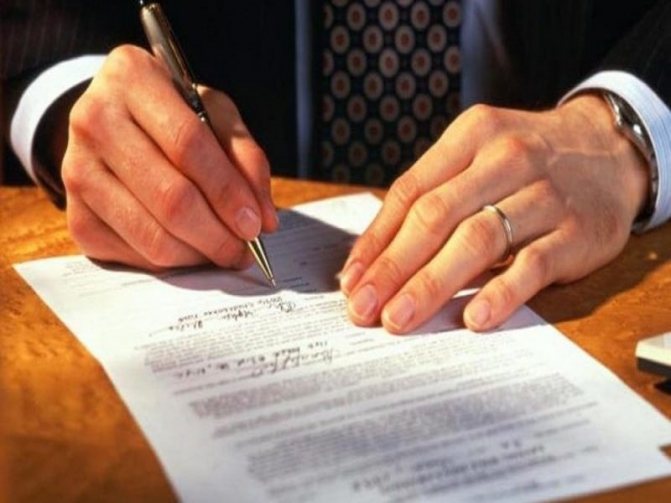
Problems of forming the bankruptcy estate of the debtor
Exclusion of property After the preliminary formation of the bankruptcy estate is completed, it is adjusted through the exclusion of part of the property. Such a change is permitted only by court decision. The court may make a corresponding decision at the request of one of the parties to the bankruptcy process.
Usually the initiative comes from the debtor. Sometimes such an application is submitted directly by the owner of the property, which was unlawfully included in the bankruptcy estate. For example, this is the spouse of a bankrupt, who owns 50% of the jointly acquired property. Please note: If the court that is considering the insolvency case finds the application received to be unfounded, it will refuse to exclude the property.
But the debtor always has the right to appeal such a decision.
What is allowed to be included in the CM
The bankruptcy estate in the event of bankruptcy of a developer, provider company, organization of any public pension fund, individual entrepreneur or private person may contain:
- money, both from fixed assets and from working capital;
- patents, intellectual property, trademark rights, patents, software and other officially recognized intangible assets;
- your funds (not borrowed or overdrafted) lying in bank accounts;
- dividends that are received (or will be transferred in the very near future) as a result of cooperation with any companies;
- obligations of counterparties to a potential bankrupt - the manager can take them into account, exclude receivables from the bankruptcy estate and thus somewhat stabilize the financial position of the person involved in the proceedings, change the case in his favor;
- various types of pledges. We remind you that they are considered separately, since they have a specific purpose - they will go to those who gave loans for them.
Read Challenging transactions of an insolvent debtor during the bankruptcy of an individual: deadlines, Federal Law

All these valuables are usually converted into money - at an online auction or, less often, directly transferred to new owners. The option of bidding is easier and faster to implement, since not every creditor is interested in the property of an enterprise or an individual Russian - they much more often just need financial resources.
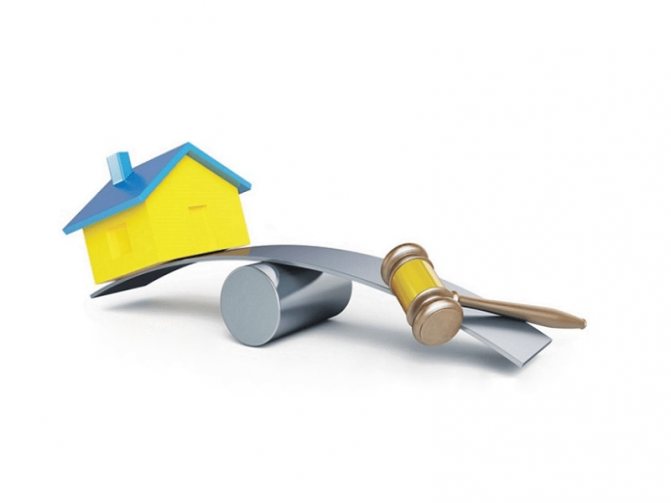
How to draw up an application for the exclusion of objects from the KM
Exclusion from the mass is carried out on the basis of a petition. It is sent to the arbitration court, which hears the bankruptcy case. The application includes this information:
- Document header: court details, plaintiff’s full name and contact details, insolvency case number.
- Date of the last inventory, inventory of property by the manager.
- A list of property that needs to be excluded from the mass. It is required to indicate the characteristics of this property.
- Grounds for exclusion (for example, the property is included in the list of property from which the bankruptcy estate cannot be formed).
The document must be completed with a formulated request. Let's look at the general exclusion procedure:
Articles on the topic (click to view)
- Criminal Lawyer
- How to pay your internet or TTK TV bill without commission?
- Conditions for bankruptcy of individuals
- Article 1484. Civil Code of the Russian Federation. Exclusive right to a trademark
- Sale of apartments at bankruptcy auctions in St. Petersburg
- Trademark cost calculator How much does it cost to register a trademark:
- Who can begin bankruptcy proceedings for a legal entity, what stages does bankruptcy include, and how long do such stages last?
- The manager transfers the results of inventory and assessment to the bankrupt.
- If the bankrupt does not agree with the composition of the bankruptcy estate, he files the claim in court.
- The expulsion case is reviewed, after which the judge makes a ruling.
If the court makes a positive decision, the property is transferred to its owner.
How is the CM assembled?
We have already described the general procedure for compiling it above; now we will consider the nuances that arise depending on the OPF and the status of the person involved in the case.
Formation of bankruptcy estate in case of bankruptcy of an individual

Now ordinary citizens can also go through this procedure and write off their debts, but they usually do not have the same impressive capital as companies. Therefore, they should prepare for the fact that in order to repay the loan, the following property will be taken from them and put under the hammer:
- apartment, house, cottage, garage, land and any other real estate that is not the only one for residence;
- money available in bank accounts;
- car, motor boat, motorcycle, trailer, scooter and any other vehicle owned;
- shares, bills, bonds and other securities;
- jewelry, works of art and other luxury items;
- household appliances and furniture cost more than 50,000 rubles.

Almost all of the debtor's property constitutes the bankruptcy estate - if we exaggerate this - although expenses for paying off legal costs or paying the manager's labor can be derived from it. When collecting CM, all transactions performed by the subject of the proceedings for the last 3 years are checked: during this time, he should not sell assets at a reduced value, rewrite them without compensation, or simply give them away. Concluding such transactions of a dubious nature is, in principle, futile and unreasonable, because they are very easy to track, challenge and cancel, after which the property will go under the hammer, both owners, real and fictitious, will lose it, and even be subject to sanctions.
Formation of KM company
Before talking about excluding equipment from the bankruptcy estate of an organization, illiquid property or other assets, you need to figure out what can be included in it. There are some nuances here, because enterprises usually have large resources (production base, vehicle fleet, etc.), but their debts are also measured in significant amounts.
The key point is that it is permissible to take into the CM only that property that is listed on the company’s balance sheet, that is:
- money lying in bank accounts;
- debts of counterparties and clients that will be paid to the subject of the proceedings in the near future;
- profit earned from current interactions with other companies;
- transport (including special equipment), industrial equipment, computers, expensive tools and similar assets;
- under-received targeted funding;
- shares in LLCs, shares and other securities;
- patents, copyrights, intellectual property, innovative developments, brands, logos and other intangible assets.
Again, recently an arbitration manager can analyze all this and determine the cost personally; he no longer needs to invite a third-party specialist, his verdict is already quite competent.
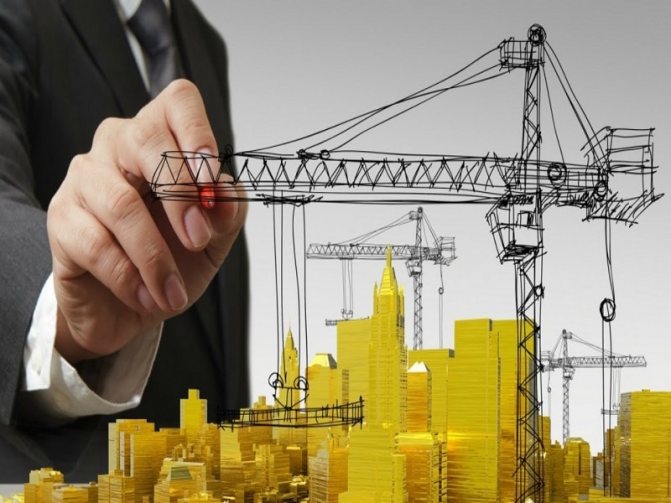
IP bankruptcy estate
An individual entrepreneur is liable for accumulated debts with his property, in this he is practically no different from an individual. There are only some reservations - for example, in addition, he has the right to withdraw from him to pay off his obligations:
- working capital available on his working accounts;
- tangible assets belonging to his company - computers, transport, even furniture;
- manufactured, purchased, exchanged or otherwise obtained products.
The problem is that for the implementation of their projects or for other needs, individual entrepreneurs usually borrow amounts much larger than the value of their company, therefore, in the event of a loss of financial stability, they are left with nothing at all.
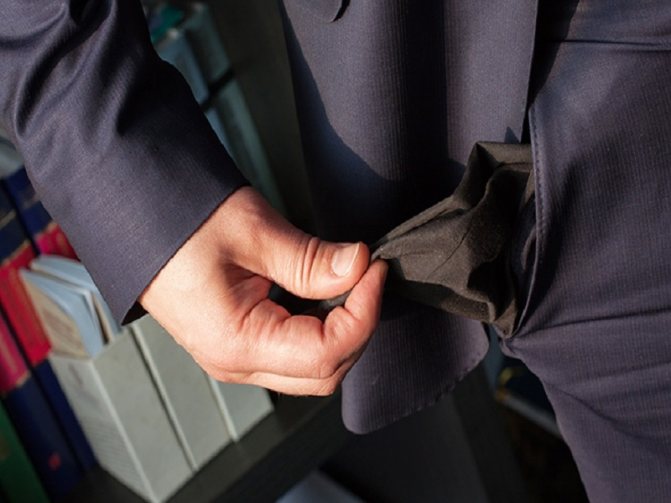
The concept of bankruptcy estate for individuals
When a citizen is declared bankrupt, the bankruptcy estate includes all the property that he disposes of as property (these are apartments, dachas, houses, vehicles, luxury items, jewelry, cash in accounts, income received, etc.). If the initiator of bankruptcy is the debtor himself, then he is obliged to attach a list of assets to the bankruptcy application . If the initiative came from creditors, then the debtor transfers the list of property to the manager during the implementation stage.
Based on the information provided, the manager draws up an inventory of the property. In the future, he can increase or decrease the prepared list by including new property and excluding that property that is provided for by the rules of the Code of Civil Procedure. If the debtor did not provide a complete list of property, or he illegally sold the property, then the manager is obliged to use all mechanisms to find the property and return it to the bankruptcy estate.
The manager must make inquiries to the regulatory authorities regarding issues of property owned by the debtor. It also analyzes all of the debtor's transactions three years before the bankruptcy filing. If transactions are identified that were signed with close relatives and other interested parties, as well as transactions signed on non-market conditions or gratuitous transactions that caused significant damage to the interests of creditors, the manager has the right to appeal them.
If the arbitration court recognizes the transaction as invalid, the property alienated under it is returned to the bankruptcy estate.
Distribution of bankruptcy estate in bankruptcy of individuals
CMs of citizens, as well as companies and individual entrepreneurs, are collected to repay the debts of these entities to creditors, to whom the money must be given in a certain order.
It is imperative and immediately necessary to cover the associated expenses: legal costs and wages for the manager. Then follow the following return order:
- people whose health has suffered due to the subject of the proceedings (various types of compensation, for example, for loss of ability to work or death);
- workers waiting for their salaries, bonuses, contributions to the Pension Fund, benefits;
- state and extra-budgetary funds;
- creditors (provided that they submitted their application on time and in accordance with all the rules).
Withdrawal of property from KM
Let’s imagine a situation: there is a debtor’s only home, the bankruptcy estate cannot support it, so how can one remove a house or apartment from it? The exclusion procedure consists of the following steps:
- The manager conducts an inventory and shows its results to the potential bankrupt.
- If you disagree with the specialist’s assessment, the subject of the proceedings files a claim with the Arbitration.
- The court considers the petition and, based on the available facts, makes a decision on what to do with the property: give it to the person involved in the case or send it to auction.
- If a decision is made to return, the direct owner gets the opportunity to use his asset again.
Read What to do if the bailiffs seized a salary card: do they have the right to do this?
The process seems relatively easy, but in practice a financial expert rarely makes mistakes, so it can be difficult to challenge his conclusions.

Inclusion of property in KM
In order for the subsequent sale of the bankruptcy estate in the event of bankruptcy of a citizen, individual entrepreneur or legal entity to be successful, fast and problem-free, it is formed from property that has the following features:
- belongs to the debtor at the time of recognition of economic insolvency or is hidden by him, but revealed by the manager;
- comes into the possession of an authorized specialist - the subject of the proceedings loses the right to enter into any transactions with her;
- can be converted into money to pay off obligations;
- capable of decreasing and increasing with successful challenge of transactions.
After the design document has been compiled, it is sent to an electronic auction so that it is easy to review and purchase remotely.

The concept of bankruptcy estate for legal entities
The initiator of the process of forming the bankruptcy estate can be the debtor himself or his creditors. The transition to the stage of bankruptcy proceedings and the formation of a bankruptcy estate means that the court has declared the debtor bankrupt and further measures to restore his solvency are meaningless.
The Insolvency Law does not provide for the concept of a bankruptcy estate. But a separate 131 article in 127-FZ is devoted to the general principles of its formation. Property that the debtor owns on the date of commencement of bankruptcy proceedings, as well as those identified or acquired during this stage of bankruptcy, is included in the bankruptcy estate. It includes things that belong to a company on the right of ownership or a unitary enterprise in the form of a municipal unitary enterprise or state unitary enterprise on the basis of economic ownership. The list may include:
- Property rights in the form of obligations of the debtor : for example, in terms of the right to claim payment of insurance compensation.
- Cash in bank accounts.
- Property necessary to support daily activities : vehicles, computers, factories, machine tools, etc.
- The company's working capital is the funds used to purchase goods for processing, etc.
- Assets that are deprived of material calculation : brands, trademarks, etc.
- Software.
- Accounts receivable.
- Lack of funding for targeted programs.
The bankruptcy estate is considered not only as the totality of the debtor's assets, but also as a special legal regime that is applied to the debtor's assets.
The bankruptcy estate is formed at the stage of bankruptcy proceedings, when the management of the company passes to the manager, and the owner does not have the right to dispose of the property from its composition at his own discretion according to clauses 1, 2 of Art. 126 127-FZ. This prohibition is due to the fact that it is at the expense of the bankruptcy estate that claims for current payments and claims of creditors, authorized bodies and employees of the debtor are subsequently repaid (based on the priority under Article 134 127-FZ).
The bankruptcy estate must be converted from property into cash during the bankruptcy process. For this purpose, various trading and non-trading procedures are used.
As part of the bankruptcy estate, property that is the subject of a pledge is taken into account separately and is subject to mandatory assessment (according to the norms of clause 2 of Article 131 127FZ).
Lease right in the bankruptcy estate
Is it possible to include it? Yes, judicial practice tells us this, and the reasons for such an arbitration decision are as follows:
- if it is implemented, the capital will be replenished, which will allow satisfying the demands of creditors in a larger volume;
- it is not included in the list of exceptions.

Stages of bankruptcy
In some cases, it does not come to an auction. Because alternative methods of solving the problem are used, which we will now briefly consider.
Restructuring
A new debt repayment plan is being developed, usually on more lenient terms - with lower interest and the like. It is approved for 3 years and is implemented under the control of the same manager.
Why does the subject of the proceedings need this? In order to pay off your obligations without losing valuable assets and not falling under restrictions. Why are creditors doing this? To return, if not all the money, then at least most of it (even within 3 years).

Settlement agreement
The parties sign an agreement according to which they waive mutual claims if certain conditions are met. Usually this is a compromise option that involves mutual concessions.
If it is not possible to reach an amicable agreement, or the debtor subsequently neglects his new responsibilities or evades fulfillment of the contract, the CM meets and an auction is held.

What property is not included (is not included) in the bankruptcy estate?
In the case of individuals and individual entrepreneurs this is:
- the only real estate for residence, including a plot of land;
- an amount equal to one subsistence minimum;
- shoes, clothes, other personal items (not including jewelry);
- things that are indispensable in everyday life and/or prescribed for medical reasons (wheelchair, transport);
- cattle, seeds, food;
- prizes and awards;
- working tools costing less than 100 minimum wages.
And, optionally, items worth up to 10,000 rubles. They are considered by the court individually.

Different companies operate with a much larger number of assets. Therefore, if the grounds for excluding property from the bankruptcy estate of an individual and a legal entity are approximately the same - this is the desire to repay debts to creditors - enterprises can also retain:
- the right to conduct core activities;
- things that are in safekeeping and, in fact, do not belong to the company;
- leased premises, areas, special vehicles, equipment;
- communal facilities used for life support of any territories.
Withdrawal of funds from CM
A potential bankrupt needs to provide information about all income, including salary, pension or even a scholarship. But there are those finances that cannot be withdrawn in any case, and these are:
Bankruptcy of individuals
from 5000 rub/month
Read more
Services of a credit lawyer
from 3000 rubles
Read more
Legal assistance to debtors
from 3000 rubles
more
Write-off of loan debts
from 5000 rub/month
More details
- living wage, calculated based on the characteristics of the region of residence;
- amounts required to provide for minor children (including alimony) and/or disabled spouses.

Drawing up an application (petition) to exclude the debtor’s property from the bankruptcy estate
This is a document that must be sent to the arbitration body if you disagree with the financial manager’s assessment. You need to fill it out as follows:
- In the “header” indicate the details of the specific court, full name and contact information of the plaintiff, data on economic insolvency.
- Enter information about when the last property inventory was completed.
- A list of assets to be removed, detailing their characteristics and the grounds for their return to the possession of the subject of the proceedings.
- Correctly formulate the request at the end.
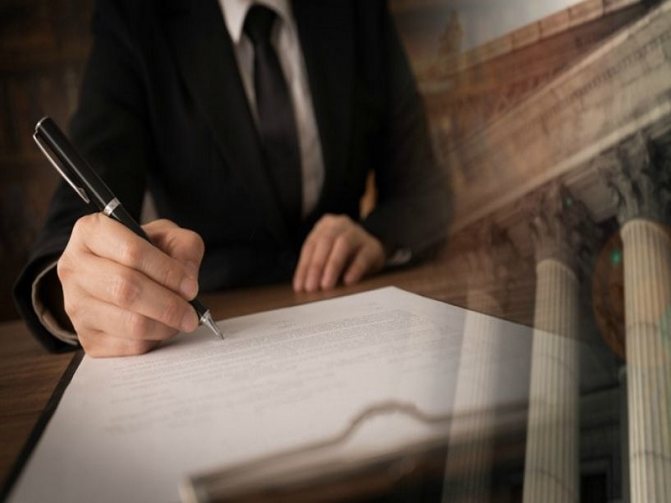
This is an official document that will be necessarily reviewed by the arbitration body, and its content will be taken into account when making a decision.
To successfully challenge the CM, you should enlist the support of specialized lawyers. And we will provide you with it - contact us: we will consider your case in detail, during the consultation we will explain at what stage of exclusion from the bankruptcy estate to file a claim, what kind of evidence to attach, how to achieve maximum benefit. And if necessary, we will provide our financial manager and represent your interests so that you can write off your debts absolutely legally and as quickly as possible.
Video on the topic:
Exclusion from the bankruptcy estate of a legal entity
The following objects are excluded from the bankruptcy estate formed from the property of a legal entity:
- Objects that are withdrawn from circulation in favor of the state treasury. For example, a similar circumstance is possible when recognizing the insolvency of unitary enterprises.
- Property rights related to a sole proprietor. For example, this is a permit for a certain activity.
- Leased objects, since they are not the property of the legal entity.
- Property, the ownership rights to which belong to third parties. For example, these are objects that are in the custody of a legal entity.
- Special objects, actions with which are regulated by special laws. For example, these are cultural monuments and socially significant structures.
- Housing stock, communal facilities necessary for the livelihoods of citizens.
The special status of the property must be confirmed by documents.







